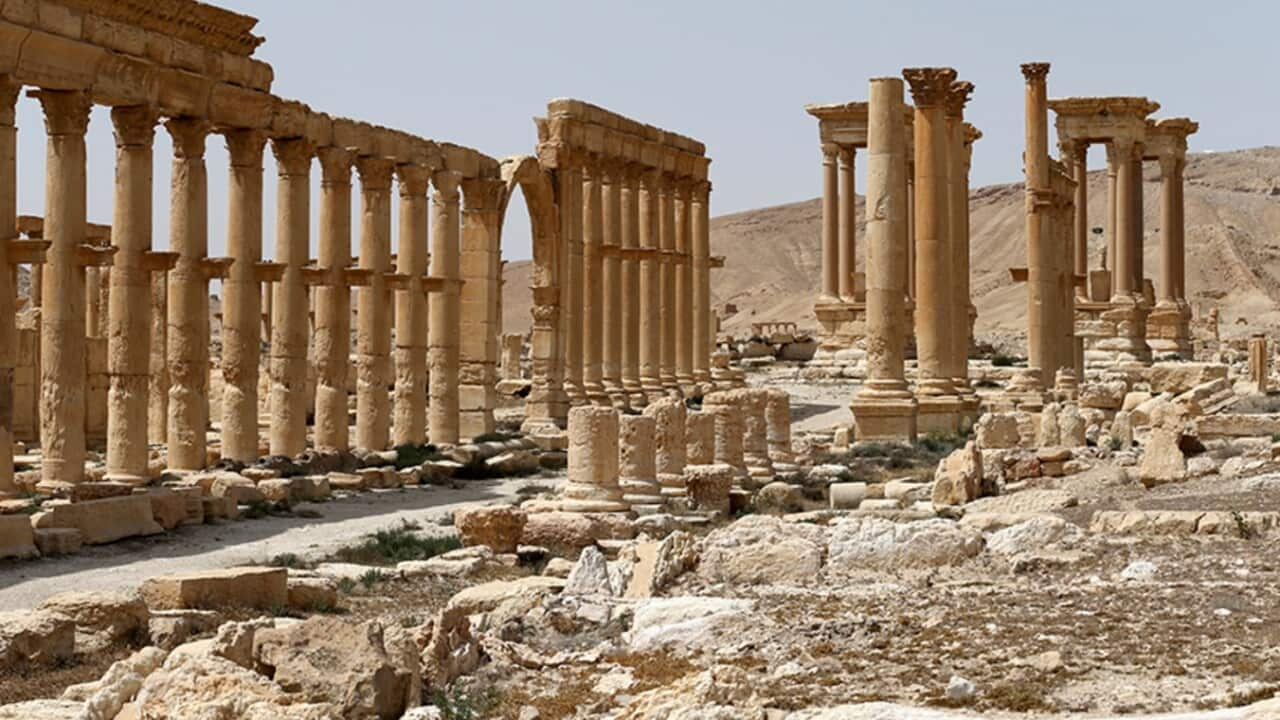The central Syrian city of Palmyra - the UNESCO world heritage site and home to several significant ancient ruins - has again fallen into the hands of militant group IS, according to Syrian Observatory for Human Rights.
The Observatory's Rami Abdel Rahman told AFP on Sunday: "Despite the ongoing air raids, IS retook all of Palmyra after the Syrian army withdrew south of the city."
IS previously occupied the city for 10 months, before Syrian forces recaptured it in March.
Professor Ross Burns from Macquarie University's Department of Ancient History told SBS, the damage inflicted by IS on the city's ancient monuments during that 10-month period was "significant", and he feared the group could look to continue where it left off.
Related reading

IS retakes Palmyra after Syria army withdrawal
“Could they do a lot more damage this time around? Yes, of course they could," he said.
“So they could do a lot more, there are still a lot of tower tombs, but the ones that they destroyed, which were about a dozen, were the ones that were most intact, even up to the second and third level.
"They have destroyed the ones that were easy to destroy with spectacular effect.”
He said history scholars "weren’t quite prepared" for the damage to the city's ancient site, particularly in the museum.
“The state of the museum was of big concern and we weren’t quite prepared for it. A lot more had been destroyed in the museum than what we expected," he said.
"Russian footage of the contents of the rooms – and we have the before and after photos – and it’s quite clear that a lot of the stuff that was on the walls and on pedestals, which would have been difficult to take, had just been smashed in position."
During the IS occupation, more than a dozen tower tombs, as well as the iconic Arch of Triumph, were destroyed.
"They chose the first lot of targets very cleverly because they were all things that could be easily blown up because they were buildings with solid walls and could contain the blast, in which the effect was much more devastating than if they would have set a bomb against a column," Prof Burns said.
"It wouldn’t do very much accept knock some fragments off it because the blast is going out in all directions. That’s why it took them three goes to destroy the Arch of Triumph."
Ancient 'transit point'
Professor Burns described the city as an ancient "transit point" because it sat between the Persian empire and the west.
"It was a transit point where the goods and traffic between the two empires could meet and be exchanged through the hands of the traders in Palmyra, who were people of Arab background, but were increasingly influenced by Roman architectural and literary ideas," he said.
"It’s a storehouse of how historical traditions can mix across a few centuries. There are very few other places which can give us such a clear indication about the pattern of exchanges."
Professor Burns said because of this "meshing" of ancient cultures, the city became a symbolic target for IS.
"That’s one of the reasons why it was an IS target. The message of Palmyra was that this isn’t just a classical site, it’s not just an Arab site, it‘s not just a Byzantine site. It’s all these cultures mixed in and interacting, and doing so peacefully and creatively."









